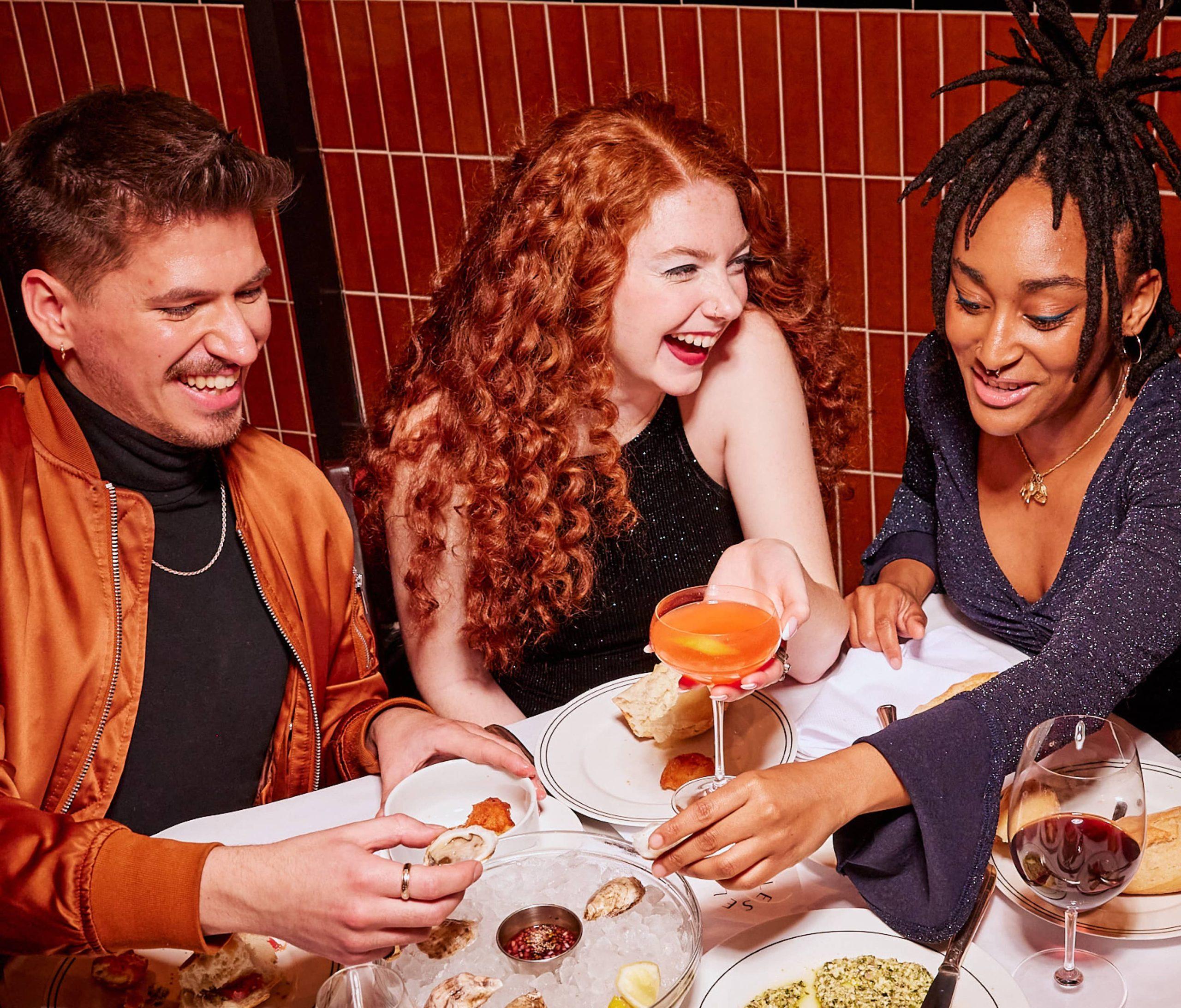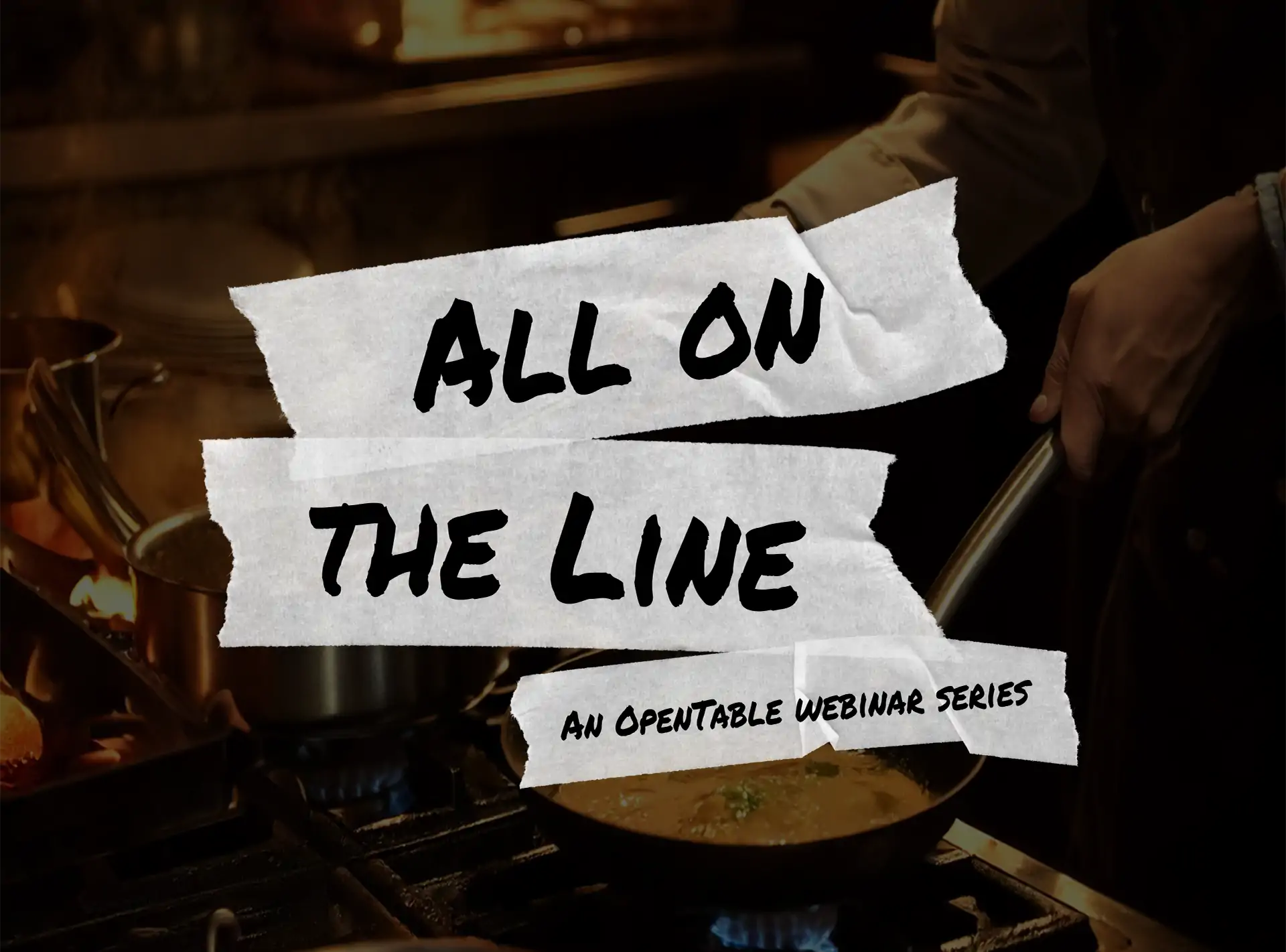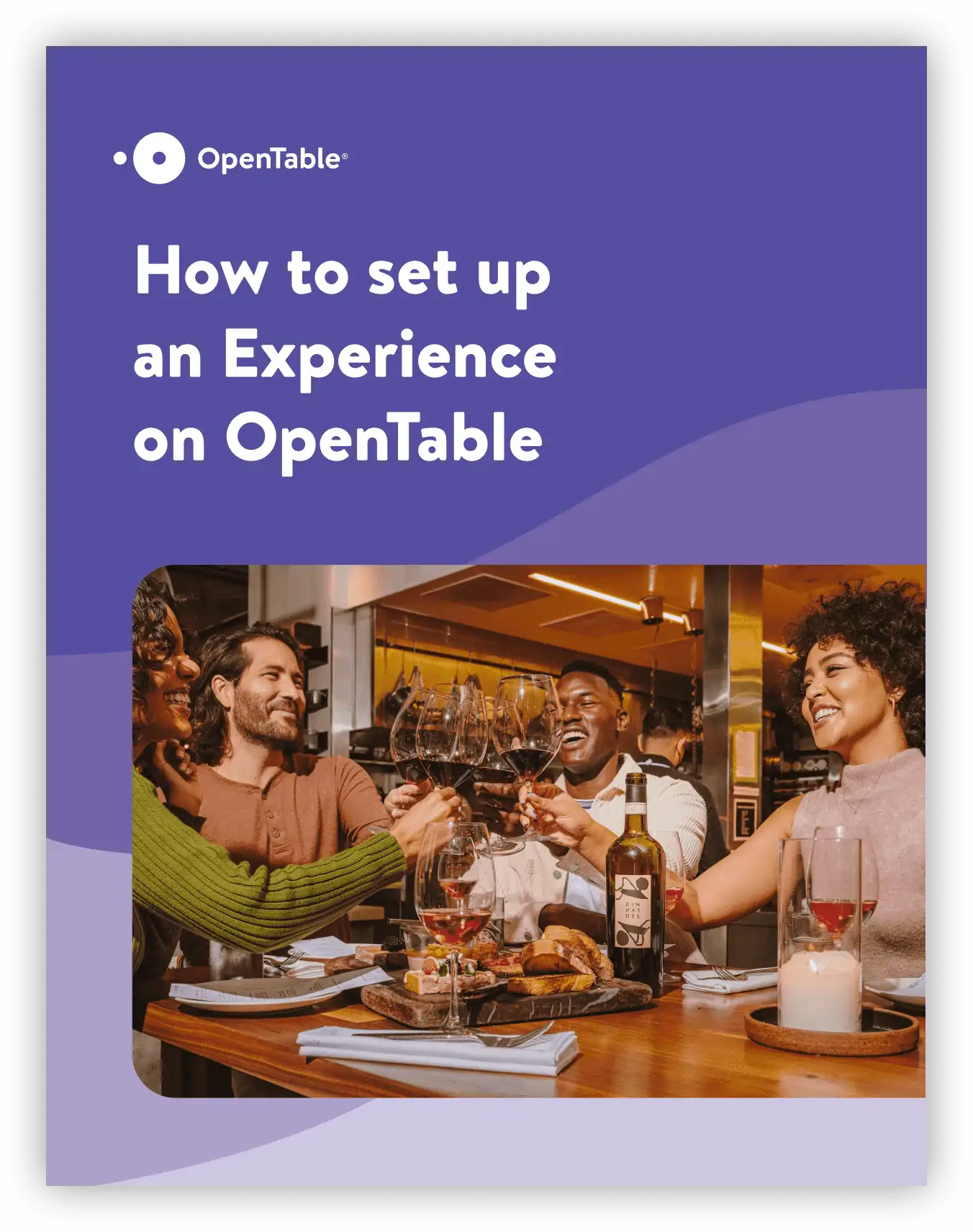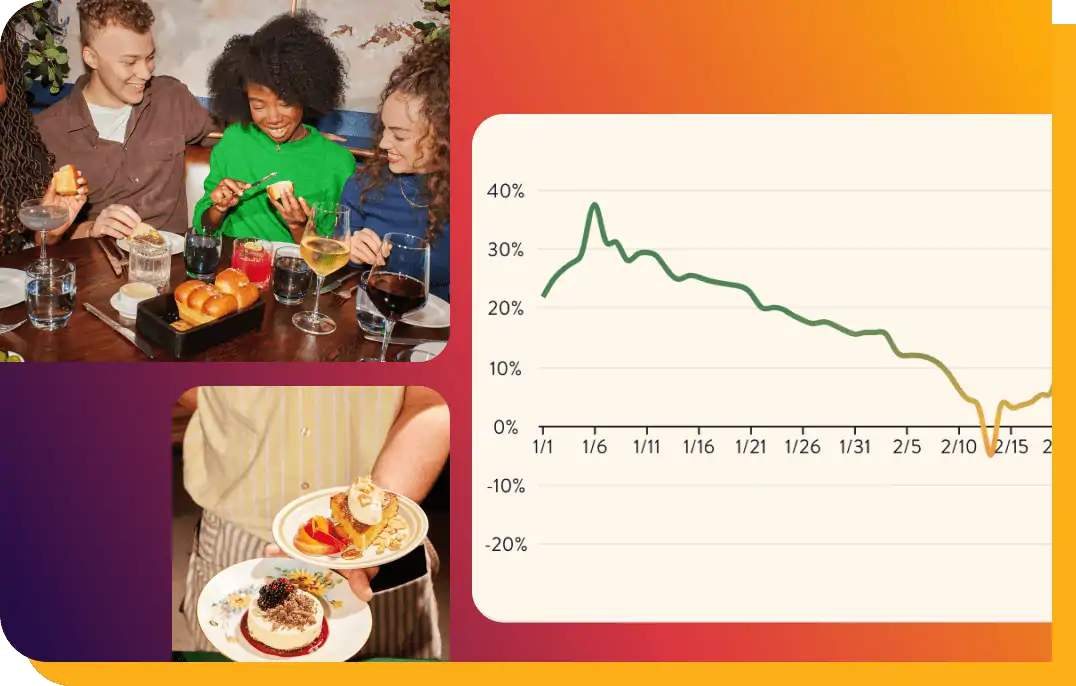Today’s restaurants are doing more with less—tighter margins, higher expectations, and fewer resources. From shifting consumer habits to increased overhead, the need to evolve your business model has never been clearer.
To help restaurants navigate this, our first webinar in the All On the Line series, dove into expert insights and actionable tips to help restaurants diversify revenue streams. In this episode, three top restaurateurs—Hollis Wells Silverman (The Duck & The Peach, La Collina, The Wells), Chef David Nayfeld (Back Home Hospitality), and Chris DeSaye (José Andrés Group)—shared firsthand insights on how they’ve successfully expanded their revenue through events, merchandise, and more.
Here are six top takeaways from the panel:
1. Events: The #1 revenue booster
All three panelists pointed to private dining and events as major revenue drivers with higher margins and more predictable costs. “If you’re not doing events, you’re leaving money on the table,” said chef Nayfeld.
“Margins are significantly better than in-restaurant dining, and you know exactly what you’re serving and staffing for.”
Even without a private dining room, Hollis Wells Silverman encouraged operators to rethink what they consider an “event.” “An event can be as simple as a set menu for eight guests. It increases your check average and streamlines service without burning out your team.”
Never hosted an event? Start small and get your name out there. Scale up once your customers know what you can offer.
2. Turn off-peak hours into catering revenue
For smaller operations, drop-off catering is a great place to start, offering a strong return with minimal complexity. Both Silverman and chef Nayfeld emphasized its viability.
“You don’t need to build a whole catering arm overnight,” said Silverman. “Start with your best dishes, prep them in trays, and drop them off. It’s your food, just packaged differently.”
Bonus: It’s a clever way to monetize downtime in the kitchen without interrupting daily service.
3. Add a revenue stream, not a strain
Chef Nayfeld found success offering CSA (community supported agriculture) boxes, wine clubs, and pasta kits with recipe cards—without draining internal resources. “It’s a true third revenue stream. It doesn’t pull business from your restaurant—it adds to it,” he said.
But both he and Silverman cautioned: know your limits. Labor strain and unclear margins can turn a promising idea into a burden.
It’s exciting to chase the next big thing, but long-term success often comes from doubling down on your strength. “Focusing on what’s already working—what’s keeping your guests happy—is paramount,” said DeSaye.
4. CPG – not just a side hustle
Selling consumer packaged goods like branded sauces, seasonings, or snacks sounds appealing but every panelist urged restaurants to give it plenty of thought before jumping in.
“It’s not a side hustle,” said chef Nayfeld. “If you’re not going all in with the right support, co-packaging can compromise your product and your brand.”
Silverman agreed: “You have to know your numbers. It’s easy to get excited about a great idea and miss that you’re barely breaking even, or even losing money.”
Instead, start small and test demand to ensure you’re not spreading your team too thin.
5. Share your story
Branded content and storytelling have potential but should be part of a larger strategy.
“Newsletters drive way more engagement than social,” said Silverman. “We saw huge last minute orders from a Valentine’s email blast.”
Chef Nayfeld, whose first cookbook launches this year, sees it more as a brand builder than a revenue driver—unless it ties into events, speaking engagements, or digital content platforms like Substack or YouTube.
6. Work with what you have
Before diving into any new revenue stream, the panelists emphasized one key question: Is the revenue worth the time you’re taking away from your core business?
“Be self-aware of your business—what your capabilities are, what your surplus is…you’ve got to pick the right idea that will actually move the needle,” says DeSaye.
That doesn’t always mean doing more — often, it means doing it differently. As all three restaurateurs pointed out, restaurants can often repurpose what they already have. Whether it’s underutilized space or excess inventory, repackaging what you already have can open up new revenue without overextending your team.
Silverman summed it up: “Don’t burn out your team. Sometimes a small tweak to something you’re already doing can drive growth.”
Putting the takeaways into action:
- Start with events & catering: Highest margin, most predictable, scalable.
- Use your data: Spot slow days, segment guests, and build experiences to drive demand.
- Test, then scale: Don’t assume demand—pilot new ideas, run the numbers, and then adjust for success.
- Bandwidth matters: If a new idea strains your core team or dilutes your guest experience, it’s not worth it.
- Water the grass you’re on: Growth doesn’t always mean more, sometimes it means better.
Hear it from the source: watch the full webinar here for more strategies and insights.




